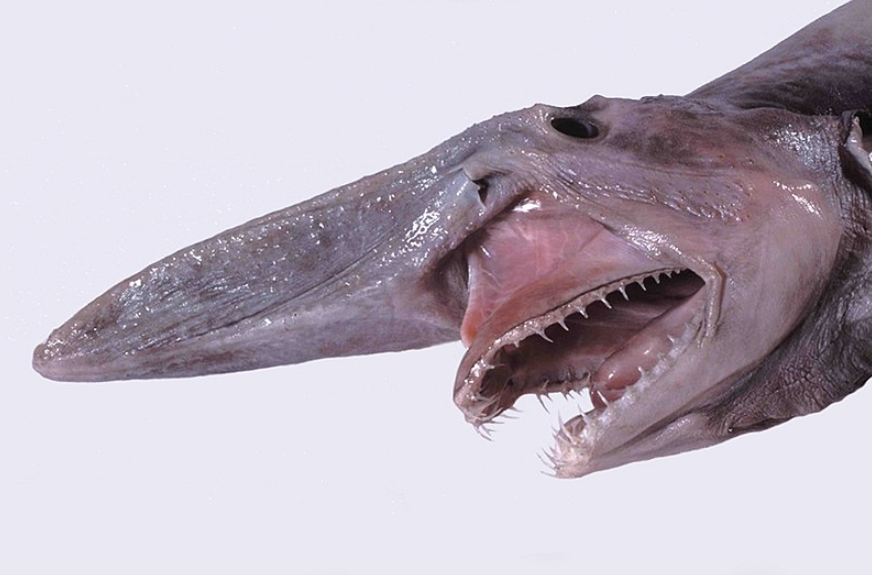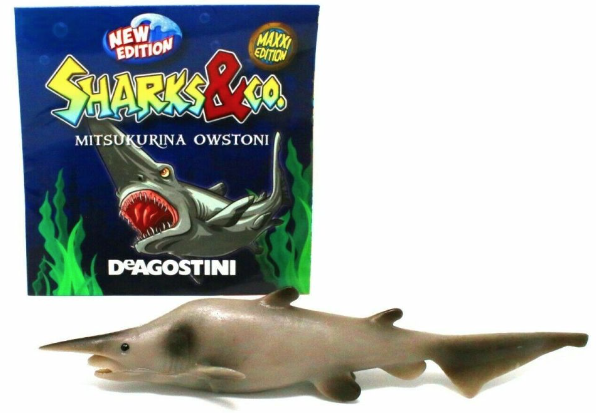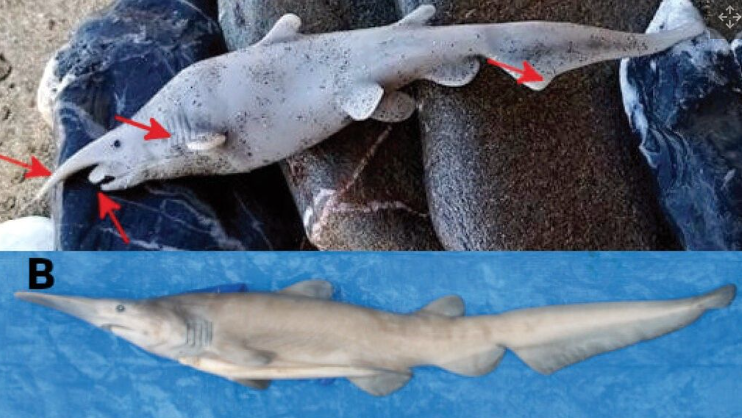The discovery of a baby Goblin shark on a beach in Greece has left one scientific journal with egg on its face after it published it in a peer-reviewed paper. The Goblin shark, Mitsukurina owstoni, is a rare species of deep-water shark, found in the Atlantic, Indian, and Pacific Oceans, but mainly found in Japan.
They are recognizable by their bizarre, pointed snouts, unique protractile jaws, tiny eyes, and five, short gill openings and have been recorded at depths as deep as 4265 feet down. They can grow to 20 feet in length though rarely come into contact with humans, and have never been found in the shallow Mediterranean Sea before. That was until Giannis Papadakis saw one on a beach in Greece in August 2020, photographed it, and sent it to a team of scientists for identification.
Without seeing that fish themselves, and based solely on the passer-by’s photo, in 2022, a paper detailing a range extension for the Goblin shark was published in the journal Mediterranean Marine Science. And that got the attention of the shark identification world.

Unnatural look
“I immediately noticed the ‘unnatural’ look of the shark,” said Jürgen Pollerspock, the founder and editor of Shark References, a database of records of sharks and other cartilaginous fish. He told Live Science “As this species is a very large shark — adult specimens can grow to over 6 meters [20 feet] — and fishing in the Mediterranean has a long tradition, it would be a surprise if such a large animal had remained undiscovered until today.”
“No way an embryo of a goblin would look anything like that,” said Will White, an ichthyologist and senior curator of the Australian National Fish Collection at the Commonwealth Scientific and Industrial Research Organisation in Australia, on Twitter.
“That’s… that’s a toy shark,” said Andrew Thaler, a marine conservation consultant with a Ph.D. from Duke University, also on Twitter.

Overall appearance
“The main thing is the overall appearance of the specimen,” White told Live Science in an email. “A 17 cm long specimen, which this is reported to be, would look very different to a newborn-sized specimen. It would be a lot less formed and have very thin translucent skin. This for me was the key thing that just wasn’t right.”
The very obvious doubts led Pollerspock and colleagues to publish a comment paper, responding to the study, and questioning its size and morphological features. They had photographs of actual juvenile Goblin sharks but above all the argument, back and forth and initial rebuttal by the paper’s authors, there was one, key, major difference. Goblin sharks have five-gill slits, and this one had four. It also looked remarkably similar to a toy Goblin shark in the Sharks & Co range, by Deagostini. It was simply a washed-up rubber toy.

Low motivation
This begs the question of how it got to be published in the first place, and miraculously made it through peer review, based solely on a photograph. Live Science says that experts are not paid for peer review work, it involves long hours, and that in combination may lead to low motivation and a lack of review quality. But that is exactly what it’s there for. To check the facts. No doubt this fishy faux pas will have sent a shockwave through those responsible for checking such works, and in March of this year, the Paper’s original authors retracted the paper.
The main image shows the specimen at the top photographed by Giannis Papadakis, which was featured in the scientific journal. The image below it is of a genuine juvenile Goblin shark.



